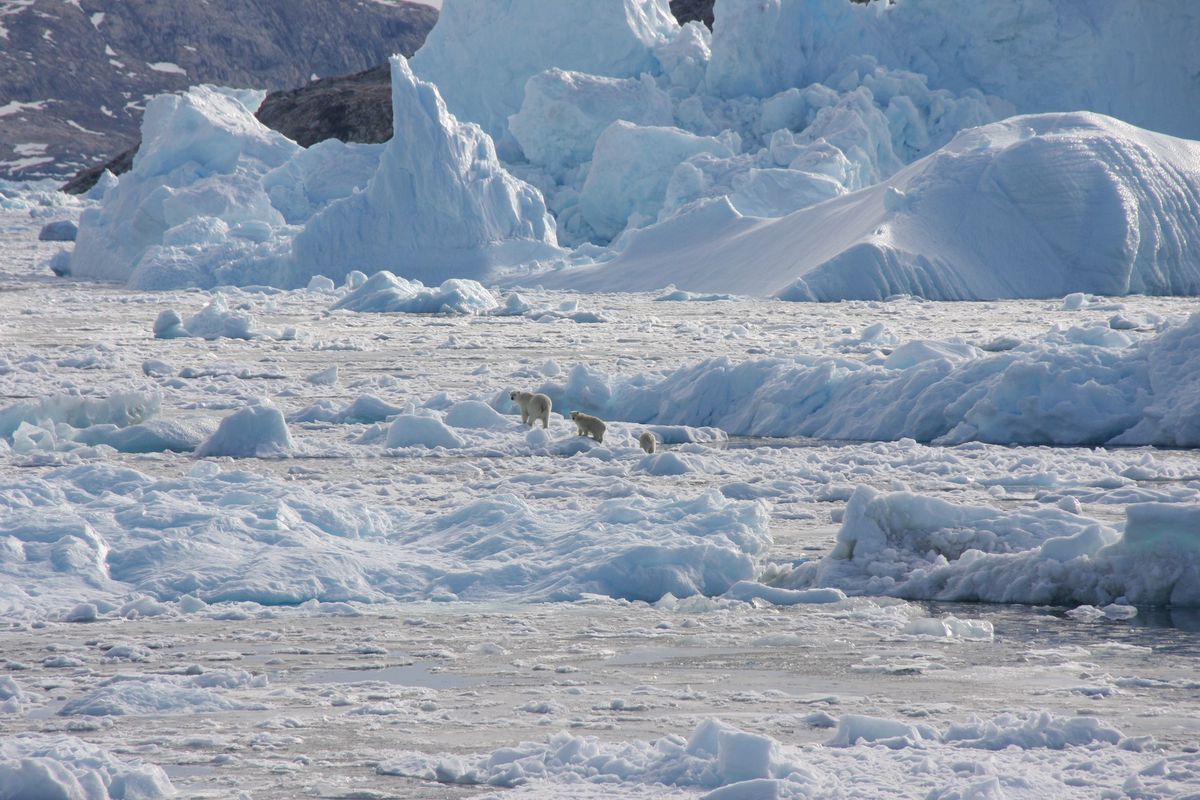Meet the unique group of polar bears living with less sea ice
Researchers have identified a special group of polar bears described in a paper published today in the journal Science. The bears might have found a unique sort of refuge from the effects of climate change in Southeast Greenland, the authors write, where their group has become genetically distinct from other polar bears. Scientists are now pushing to recognize the bears as their own unique “subpopulation,” a move that could help keep them protected from potential threats like hunting and habitat loss.
Over the past decade, the researchers surveyed polar bears across 1,800 miles of Greenland’s eastern coastline in an effort to better understand the animals’ health and movements. Although that’s a big range, they thought they were dealing with just one group of polar bears living up and down the entire coast. The bears surprised them.
After putting satellite tracking collars on some of the animals, the researchers realized that bears living in the southeast of Greenland kept to themselves and didn’t venture into places where they might bump into northeastern bears. Then, after looking at genetic samples, the researchers found that the southeastern bears are actually the most genetically isolated on the planet. That means that they haven’t interbred very much at all with bears outside of their group.
“It was kind of a wholly unexpected finding,” says Kristin Laidre, lead author of the new paper and an associate professor at the University of Washington. “Frankly, it was kind of accidental that we realized that we were actually dealing with two subpopulations of bears, not one.”

The bears had more surprises in store. The southeastern group had found a way to make a home for themselves in a place that should have been inhospitable. In the fjords where they roam, sea ice is present for only about 100 days of the year. Since polar bears hunt on sea ice, that normally would have left them with less than a third of the year to find food.
Polar bears can fast for up to 180 days of the year, but the absence of sea ice for longer than that in this region might have left them to starve. Luckily, the bears here found another resource when sea ice disappears: floating freshwater ice at a glacier front. Here, they could stalk seals from their breathing holes or sniff seals out from above and then break through the ice to reach them as they normally would on sea ice.
While some pockets of bears have been known to do this less frequently on freshwater ice, this group is believed to be unique in how much it depends on it. Without the freshwater ice, their population wouldn’t really be able to survive here.
The vanishing sea ice in their home is a preview of what’s to come for the Arctic in the future. By the end of the century, much of the icy Arctic is expected to see more than 100 days a year without ice. And with no ice, there’s no seal hunting and not enough food for the bears. That’s what’s made the polar bear the sort of poster child for stories about impending climate doom.

The way that the newly discovered pack of polar bears has found a way to persist in this kind of environment suggests freshwater glacial ice could serve as a limited “climate refugia” for some other bears in the future, the researchers write. But Laidre cautions against overselling the newly found bears as a success story or a model for other bears facing an uncertain future. There are few regions with this kind of abundant freshwater ice, called glacial mélange, so not too many bears will be able to rely on it. And while that ice has so far been somewhat spared from rising temperatures in this part of Greenland, it will become increasingly vulnerable if the planet keeps heating up.
That all means that action to slow climate change and conserve these environments will continue to be crucial for polar bears’ survival. As it is, the global polar bear population is expected to decline by 30 percent over the next three generations, according to Laidre.
She’s hopeful that if the newly spotted group of bears are designated internationally and by the country of Greenland as a unique “subpopulation” distinct from other polar bears, they’ll get more of the spotlight in conservation efforts. The group’s genetic isolation makes them an important part of maintaining genetic diversity among all polar bears — a key factor in keeping the species healthy.

Since this group of bears was discovered by accident, Laidre isn’t very sure how large the population is. She estimates that there are perhaps “several hundred” and that the group has likely been here for a couple hundred years. The band of bears has slowly grown from migrating newcomers, too. Her research identified at least two “immigrants” who help keep the population healthy by adding to the genetic pool. Laidre is hoping to launch a new research effort to focus on this special group of bears to get a better idea of how many are there and what their lives are like.
https://www.theverge.com/2022/6/16/23170894/polar-bears-sea-ice-greenland-climate-change-refuge